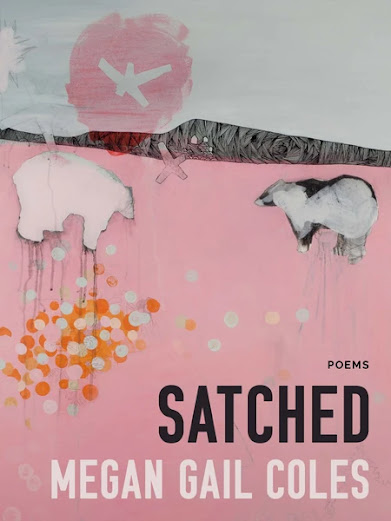I WAS CHRISTOPHER JAMES
This was before
ultrasound and Google ruined everything.
Strangers from down my
father’s way scanned Mom’s young
belly, remarking on her
small frame. Birds they are, that crowd,
built spindle-like and
sharp-sheared, dark-haired and short.
Don’t look like she’s
carrying a boy to me, neither boat builder
buried in there. And
later, a girl child yanked clear with forceps,
a great bloody gash in
her right dimple, soaked-on meshy
gauze in every snap. This
was before plastic surgery and photoshop.
My goodness Della, look’ve
the size of her, ten pounds, she’ll wear
the biggest kind of scar
on her face for always, they all dared saying. Mom
murmuring, we shouldn’ve
sued that doctor, Nelson. Go on go on go on
my dear, Dad says, you
can only just notice when she’s about to laugh or cry.
The decision decided,
Megan Gail, a fine name for a stout dory, a lean skiff,
built in hard weather to
take a beating, sturdy, made tough for wind and
water on her backside,
strong as any boy I bet, maybe stronger still.
It is interesting to see Satched: Poems (Toronto ON: Anansi, 2021), the full-length poetry debut by the award-winning St. John’s, Newfoundland fiction writer and playwright Megan Gail Coles. Following her short story collection Eating Habits of the Chronically Lonesome (St. John's NL: Killick Press, 2015), he collection of plays for young audiences, Squawk (Playwrights Canada Press, 2017), and her Giller Prize-shortlisted novel Small Game Hunting at the Local Coward Gun Club (Anansi, 2019), the poetry collection Satched is an assemblage of lyric narratives named after “the state of being soaked through to the skin or caught in a heavy downpour.” Running at more than one hundred and thirty pages, this is a hefty collection of poems, and one that is constructed with a narrative propulsion. Coles is clearly, first and foremost, a teller of stories, and her scenes are assembled out of a sequence of sentences foundational in their love of music, tone and clatter. Her music, at times, is subtle, but there is a lilt across these distances her sentences stretch, such as the opening of “INSIDE MY HEAD THERE ARE RUMOURS,” writing: “I am sorry to all the women I have hated for the wrong reasons / And to the men I have not adequately loathed for all the right ones / Here we call colonialism Canada elsewhere they call it Australia or Brazil / CIBC owns my house my car my debt and the first-born child I’ll not have / Father says I’ll never get a man if I don’t learn how to relax so I rage at him [.]”
Satched is rooted (or, anchored) in Atlantic Canada; in island life, writing a Newfoundland of resilience and deep beauty, a population and landscape both battered up against the rocky shore by storms. Anchored, or even immersed, as the title suggests; there is no escaping it. This collection is composed, nearly, as a love letter to her home and its people, writing of wind and rage and minimum wage and the possibilities of joy. Satched is a collection composed as individual portraits assembled into a scrapbook of and around her eastern landscape with its endless nuances and complexities, writing the “weather-beaten eyes shadowing soft middles and harmed hearts” of the poem “HOW I GOT TO THIS PLACE,” the “affiliation to this place you never / visit and regularly swear off as backward, / full of idiots, inbreds and rednecks you don’t like / who don’t like you much either” from “FRESH NEOLIBERALS,” or the poem “NEPHEW,” that includes:
The company that exploits
us all has used them to make
an example of supposed intolerance
while the corporate
beast we bow down to en
masse determines the rough passage
of all living things
water animals dignity and time of which we
have none each thin
caribou ticking off the decline on our watch.
There
are echoes here in the lyric of Canadian poet Ken Babstock: a way in which descriptive
passages are equally lush and conversational, carefully carved and seemingly quick-sketched,
as with the opening of the poem “CHRISTMAS TRUCE THE ONCE I SUPPOSE,” that writes:
“It’s row upon row of the people you know echoing / as you silent-sway in the
rear stairway beyond view / atop deep-red carpeting befitting a united church /
surrounding walls draped in thick layers of pale pink [.]” One curiosity with
her work-to-date, aware that each of her books is composed in a different form—the
novel, short stories, plays to poetry—is the question of how each of those
structures potentially impact upon each other as she continues to write. The
storyteller Coles is clearly a writer interested in exploring structure. Where
might she go next?



No comments:
Post a Comment